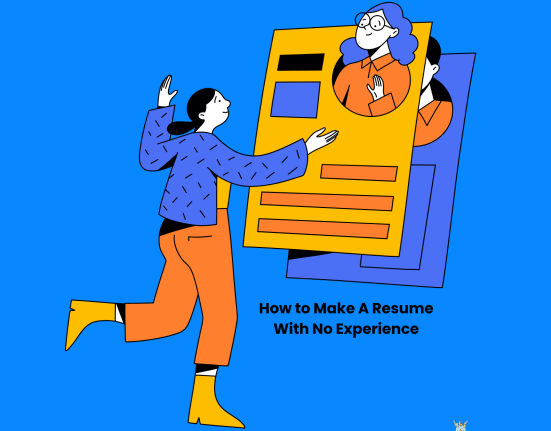6 years ago, I entered college with high hopes and ambitions. I was a computer science student with no prior experience in tech whatsoever. But I knew (and believed) I’d get my first internship within a year. Why? Because I was a computer science student, and we all get placed. Or so I thought.
Semesters flew by, and internship drives rolled around. I sat for many internships and got none. Now that I look back, I realize the mistakes I made. I had no knowledge and zero skills, and my resume only had HTML, CSS, and a 95% in high school.
But I didn’t remain a failure like that. I turned times around and got multiple job offers during the placement season 3 years ago. But you don’t have to wait around. In this article, I’ll help you understand the nitty-gritty of getting your first internship.
Excited? Let’s go:
What Tech Companies Are Looking For?
If this were the 2000s or 2010s, you’d get an internship easily. You’d only need a resume with HTML, CSS, JavaScript, and a few small projects to get an interview. But things are different now. Technology has become the sector with the biggest economy, demand, and competition.
Getting your first internship in the technology sector is harder than ever. For every position, you have thousands in line waiting to crush you and get the job. We are in a time when the demand and supply of developers are rising equally.
Hence, you need a strong mastery of your skills along with a bunch of extracurricular expertise. Let’s take an example: Suppose you’re hiring a frontend intern and you have two candidates:
- Candidate A: has an impressive resume with proper skills and projects. The GitHub is impressive and shows that the candidate is actively contributing to open source as well. They also maintain a blog on front-end development.
- Candidate B: has an okay-ish resume with HTML, CSS, and JavaScript and a few mainstream projects like ToDo list and Netflix clone. The GitHub looks pale and non-active.
As a recruiter, which candidate will you pick for an interview? Obviously!
💡 You now know what happened to me, and you also know what companies are looking for. The next step is to reflect on the current scenario and prepare yourself to get your first internship in tech.
Getting Your First Internship in Tech
The path to getting your first internship or job in tech is very straightforward. You learn fundamentals, upskill, build projects, and then apply for the job, right? Then why do so many of upstarts keep asking – ‘How do I get a job? How to land my first internship?’
I’m going to spill some facts; bear with me – They don’t want to do the boring work. They want things to be handed over to them. And you may be one of them too. If you are, then please stop reading this article.
In case you want to change and are willing to put in the work, read along. I’m going to lay down the 4-steps of getting your first internship in the technology sector.
1. Mastering Fundamentals
The first and most important step is to learn and continue learning. You may be worried that not having a computer science degree could be a hurdle, but don’t be discouraged. Many tech professionals didn’t start with one either.
Take me for example; I was a computer science student and didn’t get any internship, while my friend from the Civil Engineering branch became a frontend intern. The degree you pursue doesn’t matter anymore. All you need is skill.
Start learning:
Begin your journey by enrolling in online courses or attending workshops that focus on coding and software development. I won’t mention the resources to learn computer science fundamentals, web development, cloud, or anything. Everyone knows.
What I’d suggest, though, is – Use YouTube. No matter what you want to learn, YouTube has got it. You can also join online tech communities if you feel alone. They often provide free tutorials on programming languages, help in projects, queries, and help you stay accountable.
How to start:
Choose a programming language, such as Python, JavaScript, or Java, and start with beginner-level courses to understand its core concepts.
Or if you want to start with the most popular (and evergreen) frontend development – start with HTML and CSS, then move to JavaScript.
Focus on skill mastery:
The tech industry values your ability to solve problems and create solutions over anything else. So, don’t be overly concerned about anything. Instead, concentrate on perfecting your skills and gaining hands-on experience.
A great engineer once said – “Don’t chase success, chase excellence. Success will sneak up and follow you.” Yeah, you got it!

Set aside time every day or week for coding practice, tackling challenges on platforms like LeetCode, HackerRank, or CodeSignal.
Or pick up a few excerpts of development skills every day and use them in a project. Gradually work your way up to more complex problems as your skills improve.
2. Build Projects
To stand out and demonstrate your skills, the next step is to work on personal projects. These can be relatively small web applications, mobile apps, or even contributions to open-source projects.
The key idea is to create tangible evidence of your abilities. Think of a problem you’d like to solve or a project you’re passionate about, and begin building it. Document your progress and learning process, and share your project on platforms like GitHub. This will not only showcase your work but also your dedication and passion for tech.
Remember, in tech, GitHub is your resume, and you strengthen it through quality projects and contributions. If you can’t find unique problems to solve, you can always move along with popular project types.
For example – Clone projects, full-fledged portfolio websites, etc. But make sure to have quality over quantity.
3. Build up your Resume & Identity
See, everyone can follow the first two steps and build up good skills. But creating a good resume and identity where the best of talents fail and, hence, stay jobless.
Building a good, tech-focused resume is essential to make a strong impression on potential employers. Here’s how to do it:
- Highlight Your Skills: Your resume should prominently feature the programming languages, software tools, and technologies you are proficient in. Be specific about your level of proficiency.
- Mention Personal Projects: Include your personal tech projects in your resume to demonstrate your practical experience and passion for the field.
- Emphasize Problem-Solving: Share examples of how you’ve tackled challenges and solved problems, whether in personal projects, hackathons, or coursework. Try to mention the key features of your projects to highlight the expertise you’ve used.
- Networking: Attend tech meetups, conferences, and join online communities (like FuelEd Community) to connect with industry professionals. Building a strong professional network can open doors to direct internship interviews.
- Tailored Cover Letters: Build a cover letter structure that can be easily optimized for each internship application. A good cover letter explains why you’re passionate about the company and how your skills align with their specific needs.
- Build an Online Identity: Having a good personal brand or simply an online identity that reflects your values, personality, and expertise is a necessity now. Pick a platform, preferably LinkedIn or X, and start posting content. Let people know about you and your skills.
Remember: Your resume and online identity are the key to getting that outbound or inbound interview offer. Curate carefully.

4. Interview Prep
Getting the interview is halfway done. And trust me when I say this – 99% of the applicants don’t even clear the initial screening. Why? Because their resume is boring and doesn’t reflect their expertise.
But let’s suppose you built a good one, applied, and got the interview. Now, all you need to do is rock the interview, and you’ll have the job. Here’s how to prepare effectively:
- Coding Practice: Polish your coding skills by working through coding challenges on platforms like LeetCode, HackerRank, or CodeSignal. Start with easy problems and gradually advance to more complex ones. The idea is to polish your DSA skills.
- Data Structures and Algorithms: Understanding key data structures (arrays, linked lists, trees) and common algorithms (sorting, searching) is crucial. Study these concepts thoroughly. Well, you don’t need to be an expert, but you should be able to use data structures efficiently and write good code.
- Mock Interviews: Practice with friends, mentors, or use online platforms that offer mock interviews. Get comfortable with the interview process by simulating real interview scenarios.
- Behavioral Questions: Many candidates clear the technical interviews but get rejected in behavioral rounds. Hence, personality is key, too! Prepare to answer questions about your experience, problem-solving abilities, and how you’ve handled challenges in the past. Use the STAR (Situation, Task, Action, Result) method to structure your responses.
Create a list of commonly asked technical interview questions and practice your answers. Record yourself answering questions to evaluate your communication skills.
As for finding internship opportunities, here are some tricks:
- University Resources: Check with your university’s career services office or the placement cell. They often have job boards and partnerships with tech companies.
- Online Job Boards: Websites like LinkedIn, Glassdoor, and Indeed list numerous internship positions. But mind you, it is super hard to get interviews via these conventional boards.
- Networking: Attend tech meetups, conferences, and webinars. Connect with professionals on LinkedIn and express your interest in internships.
- Career Fairs: Attend career fairs both in-person and virtually to meet with company representatives and learn about internship openings.
- Company Websites: Visit the careers section of tech companies you’re interested in. They frequently post internship opportunities directly on their websites.
Drumrolls……Here’s the best way to get interviews: (I’ve got countless interviews with this method)
Step 1: Go to job boards and prepare a list of companies with openings you’d like to apply for.
Step 2: Take out LinkedIn/X profiles or emails of the Founders or Hiring managers of those companies.
Step 3: Craft a good outreach message and start texting all of them one by one. If you’re using LinkedIn, limit your outreach to 25-30 messages/day. If you’re using X, set a limit to 40-45 messages/day.
For example –
Try to keep the messages short and mention your skills. Since we’re talking about your first internship in tech, don’t forget to drop a link to your GitHub profile.
PS. This method works best if you’re targeting startups and smaller companies.
Can I do it in 6 months?
Yes, you definitely can! When you join online tech communities, you’ll meet people who’ve gotten full-time jobs in 6 months. The path is very simple, but mind you, not easy. You’ll have to put in the work. Consider you’re aiming for a frontend internship in the next 6 months. Here’s what you’ll do:
Spend the first two months studying HTML, CSS, and JavaScript. Trust me, it is enough. The next two months can be around building projects and polishing your newly acquired skills. The fifth month can be about learning libraries and frameworks. The sixth month will be about building full-fledged front-end projects.
Don’t trust me? Read this: Landing a High-Paying Web Development Job in 5 Months
See? Not only frontend development, you can build a good foundation in any tech in 6 months. All you need to do is – PUT IN THE WORK.











Leave feedback about this